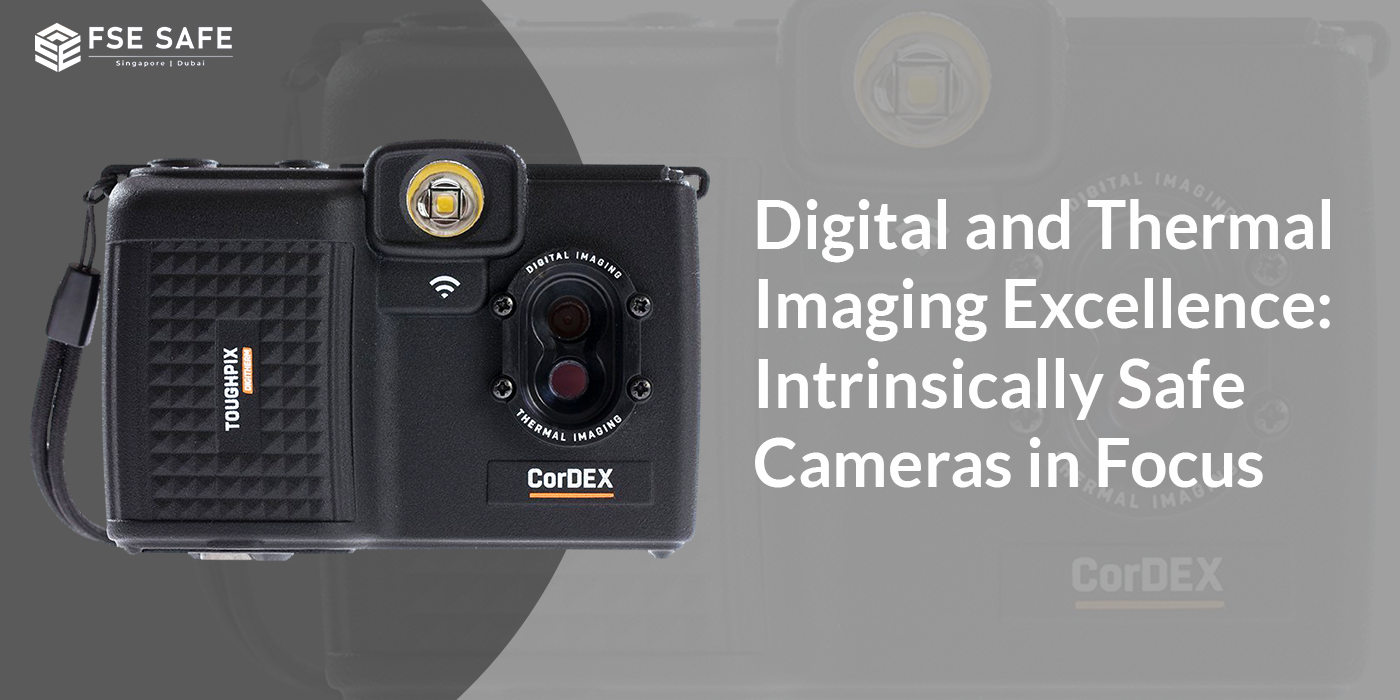In hazardous environments where the risk of explosions or fires is a constant concern, having the right tools can make all the difference. Among these tools, intrinsically safe cameras play a crucial role in ensuring both the safety of workers and the integrity of operations. In this blog post, we’ll explore the significance of intrinsically safe cameras and delve into the benefits of using both digital and digital + thermal imaging cameras in such environments.
Understanding Intrinsically Safe Cameras
Intrinsically safe cameras are specially designed devices that are engineered to prevent the ignition of flammable substances in hazardous atmospheres. These atmospheres can be found in industries such as oil and gas, mining, chemical manufacturing, and more. The concept of intrinsic safety revolves around limiting the energy levels of electrical devices to prevent sparks or heat that could trigger explosions in volatile environments.
Digital Intrinsically Safe Cameras
Digital intrinsically safe cameras are essential tools for capturing high-resolution images and videos in hazardous areas without compromising safety. These cameras are equipped with cutting-edge features, including robust housings, impact-resistant screens, and specially designed lenses to ensure durability and protection against harsh conditions.
Key advantages of digital intrinsically safe cameras include:
- Real-time Communication: These cameras often come equipped with wireless connectivity options, enabling workers to transmit images and videos in real-time. This feature can be crucial for remote monitoring, troubleshooting, and decision-making.
- Documentation and Compliance: Digital cameras allow workers to document equipment conditions, incidents, and maintenance activities, aiding in regulatory compliance and audit trails.
- Visual Inspection: High-resolution imagery provides clear visuals for identifying potential hazards, defects, or anomalies in equipment and infrastructure.
Digital + Thermal Imaging Cameras
Thermal imaging takes intrinsically safe cameras to the next level by adding the capability to visualize heat patterns and temperature differences. This technology enables workers to identify hotspots, leaks, or abnormalities that might be invisible to the naked eye, helping prevent accidents and unplanned downtime.
Benefits of digital + thermal imaging cameras include:
- Enhanced Safety: Thermal imaging enables early detection of overheating components, allowing maintenance crews to address potential issues before they escalate into dangerous situations.
- Energy Efficiency: By identifying energy leaks or inefficiencies, thermal imaging can lead to optimized processes, reduced energy consumption, and cost savings.
- Improved Predictive Maintenance: Monitoring equipment temperatures over time can help predict maintenance needs and prevent costly breakdowns.
- Versatility: Digital + thermal imaging cameras combine the advantages of both visual and temperature data, making them versatile tools for various applications, from electrical inspections to leak detection.
Conclusion
Intrinsically safe cameras have revolutionized safety practices in hazardous environments. By integrating digital imaging and thermal capabilities, these cameras empower workers with the tools they need to ensure both their safety and the operational efficiency of their industries. Whether capturing high-resolution images or detecting temperature anomalies, these cameras are indispensable assets in safeguarding workers, preventing accidents, and maintaining the integrity of critical infrastructure.
Our Offerings
- CORDEX TP3Ex – Intrinsically Safe Digital Camera
- CORDEX TP3rEx – Intrinsically Safe Digital + Thermal Imaging Camera
Empower your workforce with the safety and efficiency of CORDEX intrinsically safe cameras. Explore our offerings – FSE-Exdigital – and take a decisive step towards a secure and productive future in hazardous environments.

